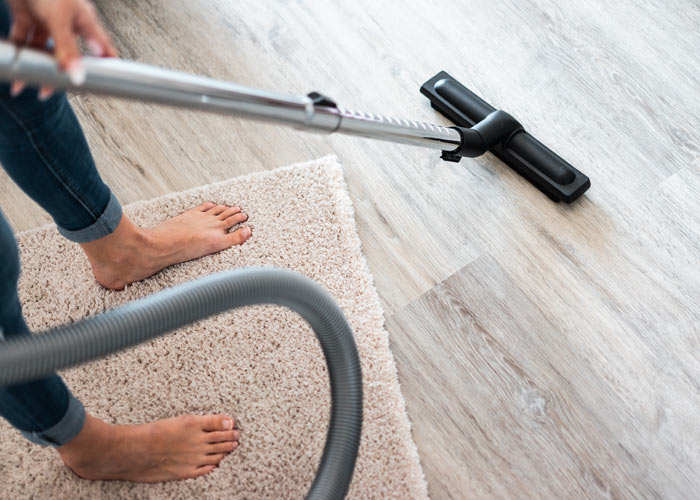Nobody wants to see their property value diminish before their eyes. Yet often the culprits can lurk unseen, nibbling away in the dark corners of our homes. Moths are one such hidden menace that can become a significant financial burden for homeowners.

As part of the Lepidoptera order, various moth species can cause alarming damage to properties when left unchecked. Tell tale signs like holes in clothes and scattered grains hint at their presence.
To protect your investment, it’s crucial to understand these pests and how to fortify your home against infestations. Effective moth control helps safeguard your property’s worth, keeping the silent destroyers at bay.
The Impact of Moths on Property Value
Alright, so you’ve got a moth infestation brewing behind the scenes. No big deal, right? Just grab the bug spray and be done with it. If only it were that simple! Left unchecked, a serious moth problem can do some real damage that ends up costing you big time.
See, moths don’t just munch on your old t-shirts. They can feast on carpets, furniture, and even the wooden structures of your home given the chance. Over time, this constant nibbling can require expensive repairs to fix the havoc they wreak. We’re talking holes in the walls, damaged flooring, tarnished upholstery, the works.
And all those costly repairs add up, often leading to thousands of dollars worth of property damage down the line. That’s money flying straight out of your wallet. Even worse, it chips away at your property’s value as the place starts to show signs of wear and tear.
Think of it this way – you’re trying to sell your home, and a potential buyer notices some suspicious holes dotted around the baseboards. They inquire about termites, you casually mention your moth troubles, and just like that you can see their enthusiasm start to wane.
Allowing pests like moths to run rampant doesn’t just cost you money for fixes. It can actually deter buyers who don’t want to purchase a problem property and deal with the hassle down the line.
And renters might also have second thoughts about moving into a place with a reputation for infestations. After all, who wants to risk having their belongings ruined by uninvited hungry houseguests?

Preventing Moth Infestations
Now that you know how destructive moth infestations can be, let’s talk about how to prevent them from happening in the first place. A little vigilance goes a long way when it comes to keeping these pests at bay!
One of the most important deterrents is making your home inhospitable for moths by removing their food sources. This means storing susceptible items like wool clothing, furs, or dried fruits and nuts in airtight plastic or glass containers. Securing your most tempting moth treats keeps them inaccessible.
Be sure to check your kitchen pantry for any open boxes of cereals, grains, pasta, crackers or birdseed. These are prime moth food targets that you’ll want to seal up tight. Keeping edibles in secure jars or containers denies moths easy access to potential snacks.
You’ll also want to be meticulous about cleanliness. Moths are attracted to crumbs and clutter that can serve as breeding grounds. Taking time to thoroughly sweep and vacuum corners, crevices and closets helps remove larva and eggs before they hatch and spread.
Pay special attention to places like under appliances, behind furniture and around floor edges where debris accumulates. A good thorough cleaning leaves less moth-friendly mess for them to feast on.
In addition to removing food debris, moths are also deterred by natural aromatics like cedar. Placing cedarwood blocks or sachets around your home infuses the air with a scent that moths find unappealing. Areas like closets, basements and attics benefit most from this moth-repellent aroma.

You can also place mothballs made from naphthalene or paradichlorobenzene in these key locations. Their strong odours disrupt moth’s scent receptors, making it harder for them to breed and lay eggs nearby. Just be mindful of using mothballs safely by following label directions.
Sealing any possible home entryways is another prevention must. Install weatherstripping around doors and door sweeps at the base to close gaps. Caulk or seal any window openings, holes in screens or other cracks where moths could squeeze through. This blocks all routes inside and leaves them locked outside where they belong.
As a final fortification, be vigilant about monitoring for signs of moths through regular inspections. Periodically checking attics, basements, closets, pantries and laundry rooms allows you to spot any emerging issues early. Catching infestations before they spiral out of control is key for prevention.
Implementing these moth-proofing tactics makes your home far less hospitable. Eliminating food sources, maintaining cleanliness, using aromatics and sealing up entry points sends the message that your house is not open for moth business!
Of course, even the most spotless, well-sealed home might still experience an occasional moth sneak attack. When an infrequent trespasser does appear, there are some DIY solutions you can try first, like pheromone traps or insecticides. However, reaching out to moth pest control experts is highly recommended if moths become a recurring problem.
Professional exterminators have industrial-strength tools and specialized expertise when it comes to fully eliminating moth infestations. Let’s explore why their services are the best bet for serious moth issues.
Professional Pest Control for Moth Eradication
Okay it’s time to let the professionals handle this moth situation! When our prevention methods don’t work and infestations become a problem bringing in expert pest control is the approach. Let me explain why relying on exterminators expertise gives you the hand against moths.
Firstly professionals have access to chemical treatments that are not available for regular purchase. These industrial grade pesticides and fumigants can effectively deal with infestations that have infiltrated into walls and structures. On the other hand DIY sprays often just push pests further into hiding.
Exterminators are also well versed in using the application methods whether its targeted spraying, misting or fumigation. They can evaluate the severity of your infestation. Determine exactly which advanced elimination techniques are necessary.
This personalized strategy based on expert inspection gives pest control an advantage. While generic products from drugstores may only address surface level issues the pros can. Eliminate the root cause of your moth problem for eradication.
Lets not forget about inspection – having a trained technician thoroughly examine your home is incredibly valuable. By checking each room, crawlspace and closet they can find hidden moth hotspots that you might overlook. Identifying these secluded breeding areas is essential for removing the infestation.
Detecting moth colonies through regular inspections enables professionals to take prompt action. Identifying an issue, in its stages before it escalates into an infestation makes the process of elimination much faster and simpler. Gone are the days of playing catch up moths have multiplied into the thousands!
This proactive approach is crucial. Professional services go beyond offering solutions, for existing moth problems. Many also offer maintenance plans that involve inspections, monitoring and targeted treatments designed to keep moths at bay
In Conclusion
At the end of the day, staying vigilant is crucial to protecting your property from moth damage. Focus on prevention through cleanliness, monitoring for signs of infestations, and taking swift action when pests appear. If significant infestations occur, call professional pest control for powerful solutions. With persistent moth-proofing tactics and services, your home’s value will remain intact. Don’t let these silent destroyers nibble away unnoticed!




